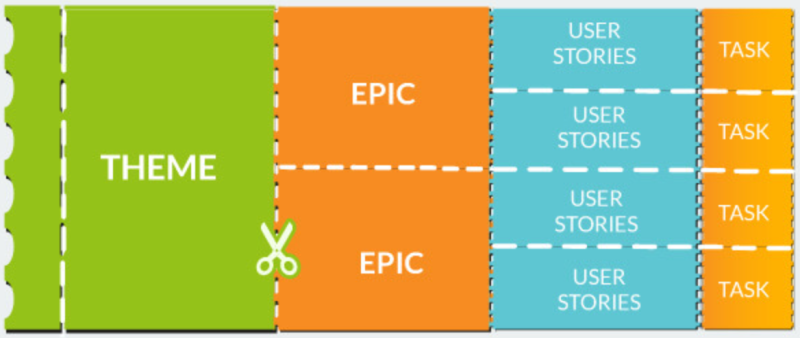Breaking down user stories into smaller, actionable tasks is a fundamental skill for Agile teams. Properly decomposed stories help ensure smoother sprint planning, improve team alignment, and enhance deliverability. However, learning how to effectively break down user stories can be challenging, especially for teams handling complex or large requirements.
In this article, we provide practical tips and techniques to help Agile teams refine their user stories for better workflow and execution.
Why Break Down User Stories?
Large user stories, often called “epics,” can:
- Obscure specific requirements.
- Lead to vague estimates.
- Increase risk due to unaddressed dependencies.
Breaking them down into smaller stories ensures:
- Clarity: Each story is well-defined with clear acceptance criteria.
- Improved Planning: Tasks fit within a single sprint, making them easier to manage.
- Better Collaboration: Teams can focus on specific deliverables.
When Should You Break Down User Stories?
A good rule of thumb is to break down stories when:
- The story is too large to complete within a single sprint.
- The team struggles to estimate the effort accurately.
- Dependencies or uncertainties make the story difficult to execute.
Tips for Breaking Down User Stories
1. Follow the INVEST Criteria
Ensure each smaller story adheres to the INVEST principles:
- Independent: Stories should be self-contained and not depend on others.
- Negotiable: Stories should allow for team input and flexibility.
- Valuable: Deliver value to the end user.
- Estimable: The team should be able to assign effort to the story.
- Small: Stories should be small enough to complete within a sprint.
- Testable: Each story should have clear acceptance criteria.
2. Use the “Slice the Cake” Technique
Instead of breaking down stories by technical layers (e.g., database, backend, frontend), focus on creating vertical slices that deliver end-to-end functionality. For example:
- Original Story: “Build a user login feature.”
- Sliced Stories:
- Create the login page UI.
- Implement user authentication.
- Add error handling for failed logins.
This ensures each story delivers value and can be tested independently.
3. Decompose by Workflow
Break down stories based on user workflows or processes. For example:
- Original Story: “Enable customers to place an order.”
- Workflow-Based Stories:
- Select items and add them to the cart.
- Enter delivery and payment information.
- Confirm the order and display a receipt.
4. Split by Data Variations
For stories with multiple data types or scenarios, split based on variations. For example:
- Original Story: “Generate reports for users.”
- Data Variation Stories:
- Generate daily reports.
- Generate monthly reports.
- Export reports to PDF.
5. Address Edge Cases Separately
Identify and isolate edge cases or exceptions. For example:
- Original Story: “Handle user password resets.”
- Edge Case Stories:
- Send reset email for valid users.
- Handle invalid email addresses.
- Prevent abuse of the reset function.
6. Break Down by User Roles
For stories with multiple user roles, split them based on functionality for each role. For example:
- Original Story: “Create a dashboard.”
- Role-Based Stories:
- Build an admin dashboard.
- Build a user dashboard.
- Add dashboard customization options.
7. Utilize Acceptance Criteria
Use detailed acceptance criteria to identify natural breakpoints. For example:
- Original Story: “Enable users to manage their profiles.”
- Acceptance Criteria:
- Users can update their profile picture.
- Users can change their contact information.
- Users can update their password.
Each criterion becomes a smaller, testable story.
8. Start with “Happy Path” Scenarios
Begin with the simplest, most straightforward use case (the “happy path”) before addressing complexities. For example:
- Original Story: “Build a payment system.”
- Happy Path Stories:
- Process payments with a single credit card.
- Handle multi-step payment verification.
- Add support for alternative payment methods (e.g., PayPal, Apple Pay).
9. Use Spikes for Research-Heavy Stories
When a story requires extensive research or experimentation, create a spike to address the unknowns before breaking it down further. For example:
- Spike Story: “Research API options for payment processing.”
- Follow-Up Stories:
- Integrate the selected API.
- Test API performance under load.
10. Leverage Team Collaboration
Breaking down stories should be a team effort. Involve the entire team to:
- Identify risks and dependencies.
- Ensure stories align with team capacity.
- Validate that stories are small enough to complete within a sprint.
Tools to Simplify Story Decomposition
Planning Poker Agility
Planning Poker Agility helps Agile teams refine their stories and estimate with precision by offering:
- Customizable Estimation Scales: Perfect for stories of varying complexity.
- Real-Time Collaboration: Ensure all team members are aligned.
- Integration with Jira: Easily break down stories and sync them with your backlog.
With Planning Poker Agility, you can transform large, unwieldy stories into manageable, actionable tasks.
Final Thoughts
Breaking down user stories is a critical skill for Agile teams to master. By using techniques like vertical slicing, workflow decomposition, and leveraging team collaboration, you can ensure your stories are clear, actionable, and aligned with sprint goals.
Tools like Planning Poker Agility make the process even easier, enabling teams to refine their stories and improve their sprint planning process. Start breaking down your user stories effectively and watch your team’s productivity soar!

